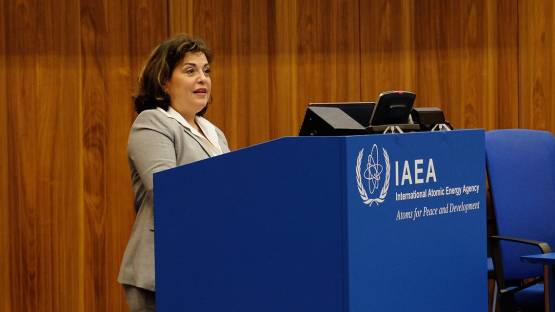“The concept of a ‘safety culture’ is something that I identified for myself as very important, early on in my career,” says Maria Moracho Ramirez, Senior Safety Officer at the IAEA. “It relates to a culture of behaviour, and if you’ve been a trainer, you know that training for influencing behaviours is very complicated.”
In organizations dealing with nuclear and radioactive material, a strong safety and security culture helps to prevent accidents, as well as intentional acts that could lead to theft of nuclear material and/or harm the facility. It refers to the way in which safety and security is perceived, valued, prioritised and integrated into organizations. It involves leadership and other human factors. “Developing effective training to influence culture and change behaviours is challenging,” Moracho Ramirez says, “because it is quite different from explaining, for example, the design of a nuclear power plant, which follows a more straight-forward flow and can also be demonstrated physically.”
Not one to back away from a challenge, at the IAEA Moracho Ramirez has pioneered the concept of the IAEA’s first-ever IAEA International School on Nuclear and Radiological Leadership for Safety. The school focuses on fostering a culture of safety and on demonstrating the links between leadership and safety. Since its launch in 2017 it has attracted more than 200 early to mid-career nuclear professionals.
“Before the school, safety publications tended to relate more to ensuring effective management systems, rather than the role of leadership in effective nuclear safety. With the School we introduced this focus, and combined it with interactive, experiential learning, based on real life nuclear related scenarios,” she says.








